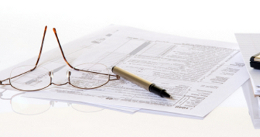FAQ
ICall us at 352-637-1122 for immediate service.
Accounting and Bookkeeping
Full service accounting and bookkeeping firm established in 1992... With decades of experience, you can be confident that our services will help ensure your company operates efficiently.
Small Business
We focus on the unique needs of each of our clients and design services appropriately. We promise to deliver a complete range of service in a friendly, timely, and professional manner.
Individual and Business Tax Preparation
No matter how complex your tax situation, our professional tax service team is ready to help you. We're available for you throughout the year when you need to file estimated taxes or when you have tax questions.
Nonprofit Accounting
Work with a firm that gets nonprofits. Contact our office today for a FREE, no obligation review of your needs and a FREE quote.
Free Consultation
Contact us today for a Free Consultation. Let's get started improving your Bottom Line right away.
IRS Problem Resolution
If you received a notice from the IRS you need tax problem resolution right away. Contact us for a Free consultation.


WhatsNew
FAQ
Q: I am starting a new business. What type of entity should I set up?
A: If you are forming a small business, you face several choices. Sole Owner, Partnerships, corporation or S-Corporation, Limited Liability Corporation and Limited Liability Partnership. These entities have certain tax consequences that you need to be very aware of. An appointment with Bob Cohen will help you decide which entity would be the most tax advantage for you. Call for a free consultation.
Q: What is an Intangible Personal Property Tax?
A: Florida’s intangible personal property tax is an annual tax based on current market value, as of January 1, of intangible personal property owned, managed or controlled by Florida residents or persons doing business in Florida.
Q: What can I do if I cannot pay my Federal Income Tax?
A: This is a common problem for many taxpayers. IRS allows taxpayers to pay their tax liability on an installment basis. You must attach form 9465 to request this arrangement. You can request to make monthly payments. Although this is helpful to the taxpayer it is important to note that interest will continue to accrue and possibly a late payment penalty will be assessed.
Q: How long should I keep my records?
A: Normally, your records should be kept for a minimum of 3 years after the year, which they are applicable; since the IRS generally has 3 years from the date your return is filed to audit your return. Some authorities advise to keep record for at least 6 years since in some cases where income has not been reported, the IRS may go back as far as six years to question a tax return.
Q: I have just received an inheritance. Do I have to pay taxes on this?
A: Normally not.
Accounting and Bookkeeping Terms
| Accounts Payable | These are the debts that your business owes to suppliers. It is also called 'A/P' for short or 'Creditors'. | |||
| Accounts Receivable | These are the outstanding debts that your customers owe to your business. It is also called 'A/R' for short or Debtors. | |||
| Accounts Payable Invoice | AP invoice is a document raised by the customer and sent to the company with the details of the items sent, qty sent, price and other details. The company will enter this invoice details in the Payable module and then pay the customer according to the credit terms. This invoice may come along with the consignment or may be sent to the company separately. | |||
| Accounts Receivable Invoice | AR Invoice is a document raised by the company and sent to the customer with the details of items sold, qty sold, price, tax and other details. Based on this invoice, the customer will send the payment in case of credit sales. | |||
| Accrual Based Bookkeeping | This is a method where you record the income when the sale occurs and not necessarily when you receive the payment. Also you record an expense when you receive goods or services, even though you may not pay for them until later. | |||
| Assets | These are items of value owned by the business. Assets are shown as balance sheet accounts. There are different types of assets (fixed, current, intangible). Examples of assets include furniture, computer equipment, bank accounts, and goodwill | |||
| Balance Sheet | This is like a financial snapshot of your business at a certain point in time. It lists your assets, liabilities and the difference between the two which is the net worth (or equity) of the business. The balance sheet is also called the 'Statement of Financial Position' | |||
| Capital | This is money invested in the business by the owners. It is also called equity. | |||
| Cash Based Bookkeeping | This method is when you record income only when you receive the cash from your customers. You also only record an expense when you actually pay your suppliers. | |||
| Chart of Accounts | This is a list or hierarchy of account descriptions that you use to keep the bookkeeping records for your business. | |||
| Cost of Goods Sold | This is the Cost of items or services sold to your customers. It is often called and abbreviated to 'COGS' | |||
| Creditor | This is a company or an individual that you owe money to. | |||
| Credits | One component of every bookkeeping transaction (journal entry) is a credit. Credits increase liabilities and equity but decrease assets. | |||
| Current Assets | Normally these are things that the business owns that are in the form of cash or will generally be converted to cash or used up within a year. Some examples of these are Accounts Receivable and Inventory | |||
| Current Liabilities | Normally these are debts that the business owes that are generally payable within a year. Some examples of these are Accounts Payable, Taxes and Payroll. | |||
| Debits | One component of every bookkeeping transaction (journal entry) is a debit. Debits increase assets but decrease liabilities and equity. | |||
| Debtor | This is a company or an individual that owes you money. | |
|
|
| Depreciation | This is a write-off of a portion of the cost of fixed assets, such as vehicles and equipment. It is usually done annually but can be done more frequently. Depreciation is also listed as part of the expenses on the 'Profit & Loss' or 'Income Statement' | |||
| Double Entry Bookkeeping | In this method every transaction has two entries: a debit and a credit (also called a journal entry). Debits must always equal credits. Most if not all bookkeeping software use double entry bookkeeping. | |||
| End of Year Rollover | At the end of the financial year the Profit & Loss accounts totals are reset to zero and the balance sheet accounts totals are carried forward into the next financial year. | |||
| Equity | This is the net worth of your business. It is also called 'Capital' or 'Owner's Equity. Equity is made up of investment in the business by the owners plus any profits that the business has made that hasnt been taken out. | |||
| Fixed Assets | These are assets that are generally not going to be converted to cash within a year. Example would be plant equipment or vehicles. | |||
| General Ledger | This is a collection of different types of accounts (balance sheet, income, expense) that are used to keep the bookkeeping records of a business. A general ledger works with double entry bookkeeping and journal entries for each transaction. | |||
| Income Accounts | These are the accounts that are used to keep track of your sources of income. Some examples are Sales, Consulting Income or Interest. | |||
| Income Statement | This is also called a Profit and Loss Satement' or a 'P&L'. It lists the income, expenses, and net profit (or loss) for the business. The net profit (or loss) is equal to the total income minus the total expenses. | |||
| Intangible Asset |
This is something of value that is owned by the business that cannot be touched physically. Examples include a trademark, patent or goodwill |
|||
| Inventory (Stock) | These are goods are held for sale to customers. Inventory can be items that are bought for resale or it can be products that are manufactured and sold to the customer. | |||
| Invoice Date |
This is the date that the invoice was created. Normally this will be based on when products were shipped or services were provided | |||
| Invoice Due Date |
This is the last possible date that payments can be made or received for an invoice without triggering any late payment penalties | |||
| Journal (Journal Entry) |
This is a detailed bookkeeping transaction that is recorded (or posted) in the general ledger. It is made up of a debit and a credit component. |
|||
| Liabilities |
These are the debts that your business owes to its suppliers, banks or the government. Examples can be taxes or loans. |
|||
| Long Term Liabilities |
These are debts that a business owes to its suppliers that are not generally due to be paid off within a year. An example would be a mortgage payment. |
|||
| Net Income |
This is also called 'Profit' or 'Net Profit'. It is the total income minus the total expenses |
|||
| Profit & Loss Statement |
This is also called the 'Income Statement' or 'P&L'. It is the total income minus the total expenses for the business. |
|||
| Retained Earnings |
These are profits from the business that have been kept or 'retained' in the business and not paid out to the owners. |
|||
| Trial Balance |
This is a list of the general ledger accounts showing the debits in one column and the credits in another. The main objective of a trial balance is to ensure that the total credits and total debits balance (eg. total debits = total credits). It also validates that the double entry bookkeeping is working correctly. |























